Salmon Spears Item Number: E2675-0 from the National Museum of Natural History
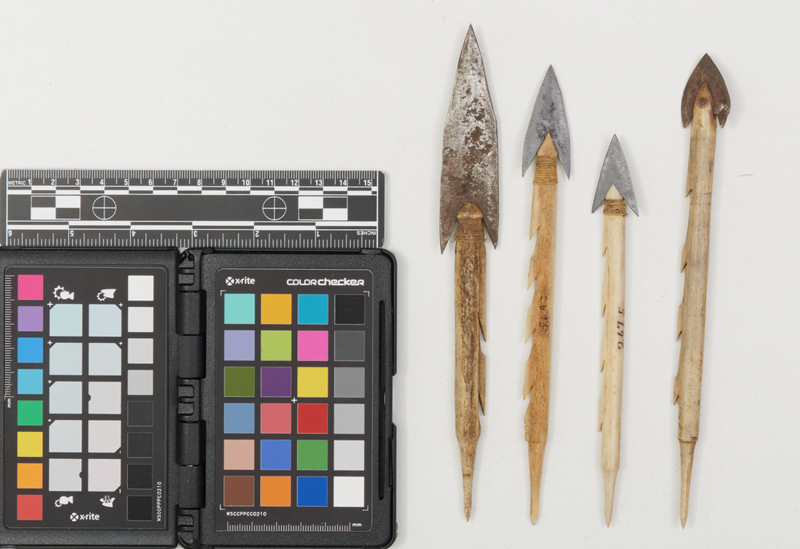
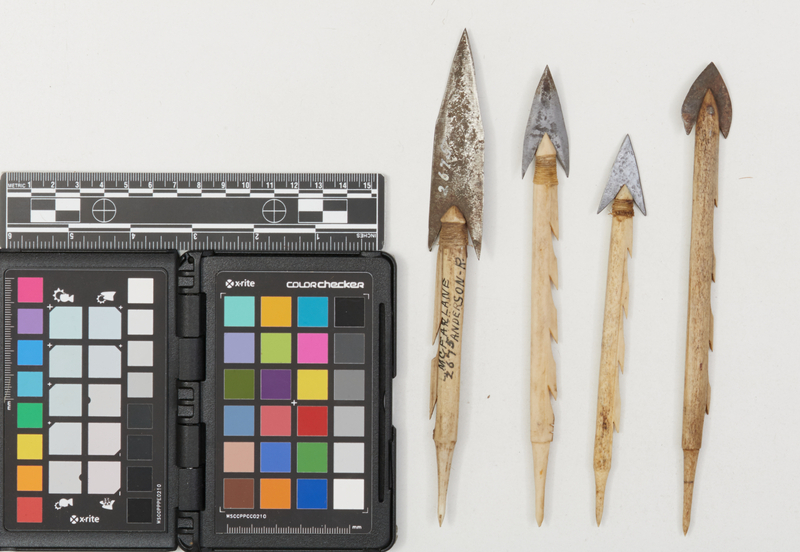
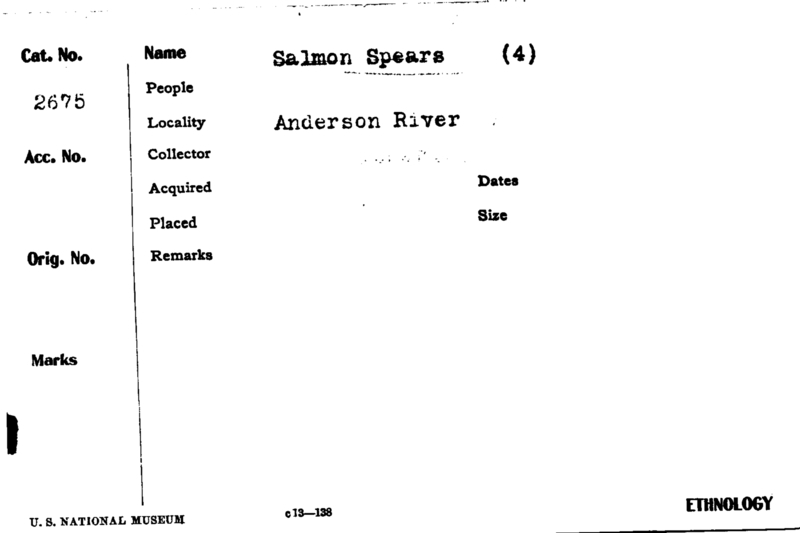
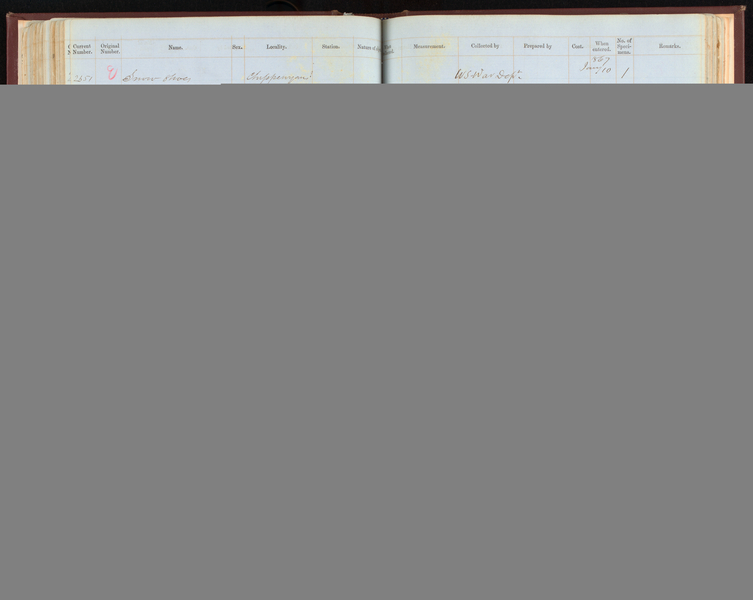
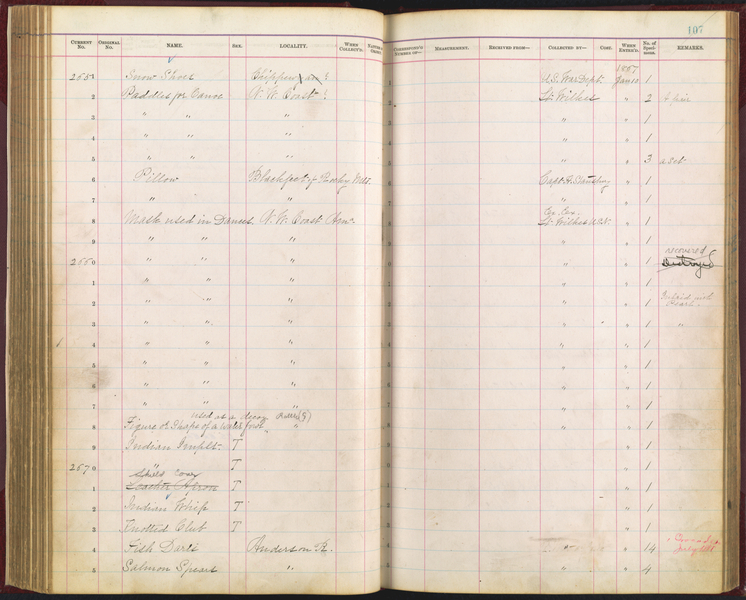
Notes
FROM 19TH OR EARLY 20TH CENTURY EXHIBIT LABEL WITH CARD 7420: "ADJUSTABLE SPEAR-HEADS.-CONSIST OF TWO PARTS: A CARVED, BARBED BONE, WHICH IS POINTED AND FITS INTO HEAD OF WOODEN SHAFT, AND A METAL HEAD, BARBED, WHICH IS LASHED IN A SLOT IN OUTER END OF THE BONE HEAD. FROM ANDERSON RIVER. LENGTHS, 6 1/2 INS. TO 1 FT. 2 INS. BRITISH AMERICA, 1867. COLLECTED BY ROBERT [SIC, SHOULD BE RODERICK] MACFARLANE. NOS. 7,420, 2,431, AND FOUR SPECIMENS, NO. 2,675."Note that 2675 is mentioned as being used in an exhibit in Berlin in 1880 on p. 60 of USNM Bulletin No. 18. Objects are described there as heads of fish-darts, Eskimo, Mackenzie River district.Source of the information below: Inuvialuit Pitqusiit Inuuniarutait: Inuvialuit Living History, The MacFarlane Collection website, by the Inuvialuit Cultural Resource Centre (ICRC), Inuvik, N.W.T., Canada (website credits here http://www.inuvialuitlivinghistory.ca/posts/12 ), entry on this artifact http://www.inuvialuitlivinghistory.ca/items/33 , retrieved 1-8-2020: This is a set of four iron-tipped arrowheads. Three are made from bone, and one is made from antler. The body of each arrowhead has barbs along one edge, and each has a conical tang that would have been inserted into the ends of an arrow shaft. The iron tips are held in slots cut into the forward ends of the arrowheads.. The three bone arrowheads have sinew binding compressing the slot, keeping the iron tip securely in place, while the arrowhead made of antler has a rivet running through the slot. One of the arrowheads has two notches just above the tang, which may have been an owner's mark. The Smithsonian Instutiton catalogue identifies these items as tips for salmon spears; however, they are similar in size and shape to arrowheads on arrows in the MacFarlane Collection.
Item History
- Made in Northwest Territories, Canada
- Collected in Northwest Territories, Canada
- Received from Roderick R. MacFarlane on December 21, 1866
What
- Name
- Salmon Spears
- Identification Number
- E2675-0
- Type of Item
- spear
Who
- Culture
- Eskimo, Inuit and Inuvialuk
- Received from
- Roderick R. MacFarlane
Where
- Holding Institution
- National Museum of Natural History
- Made in
- Northwest Territories, Canada
- Collected in
- Northwest Territories, Canada
When
- Acquisition Date
- on December 21, 1866
Other
- Accession Number
- 66A00090